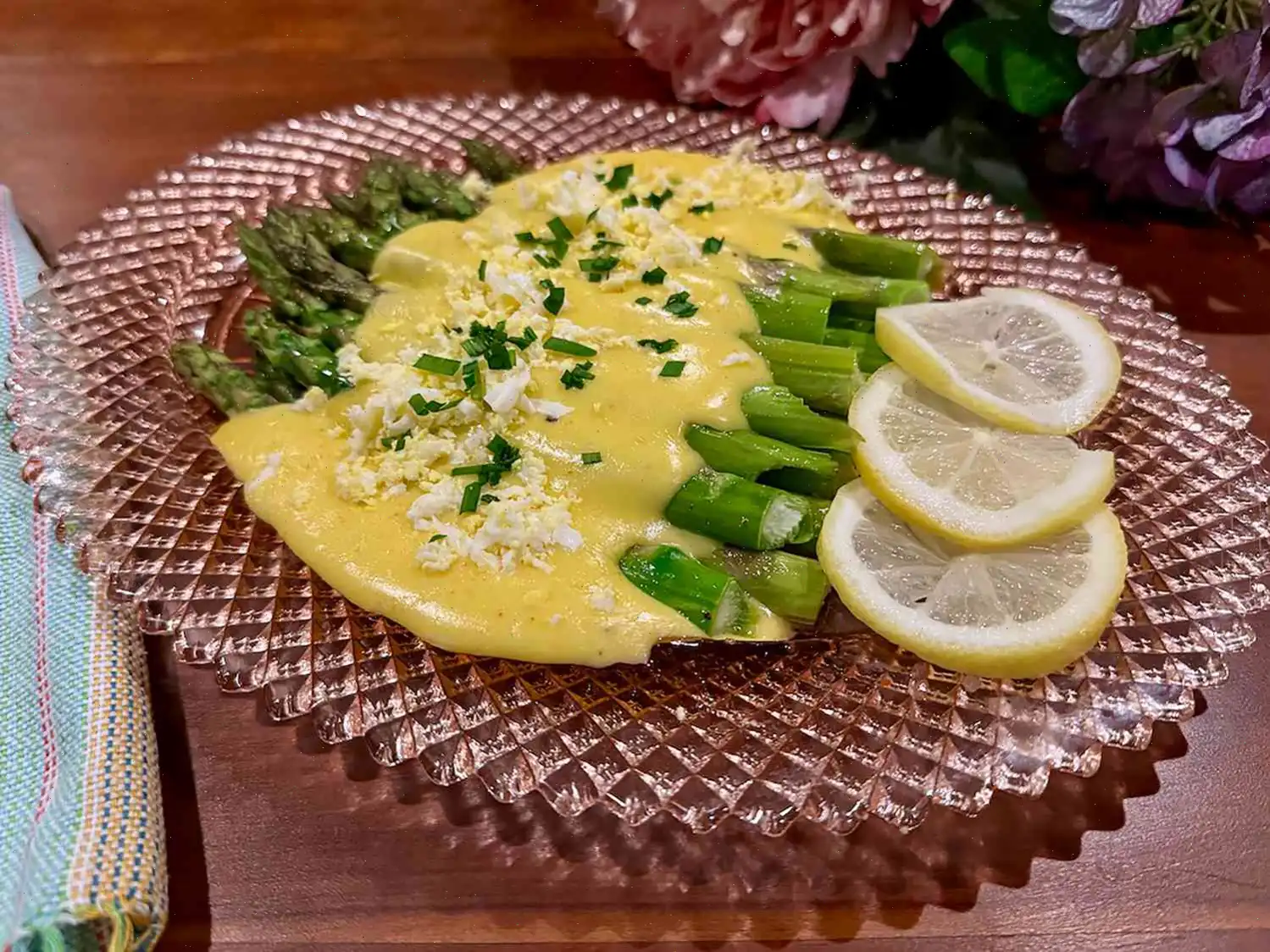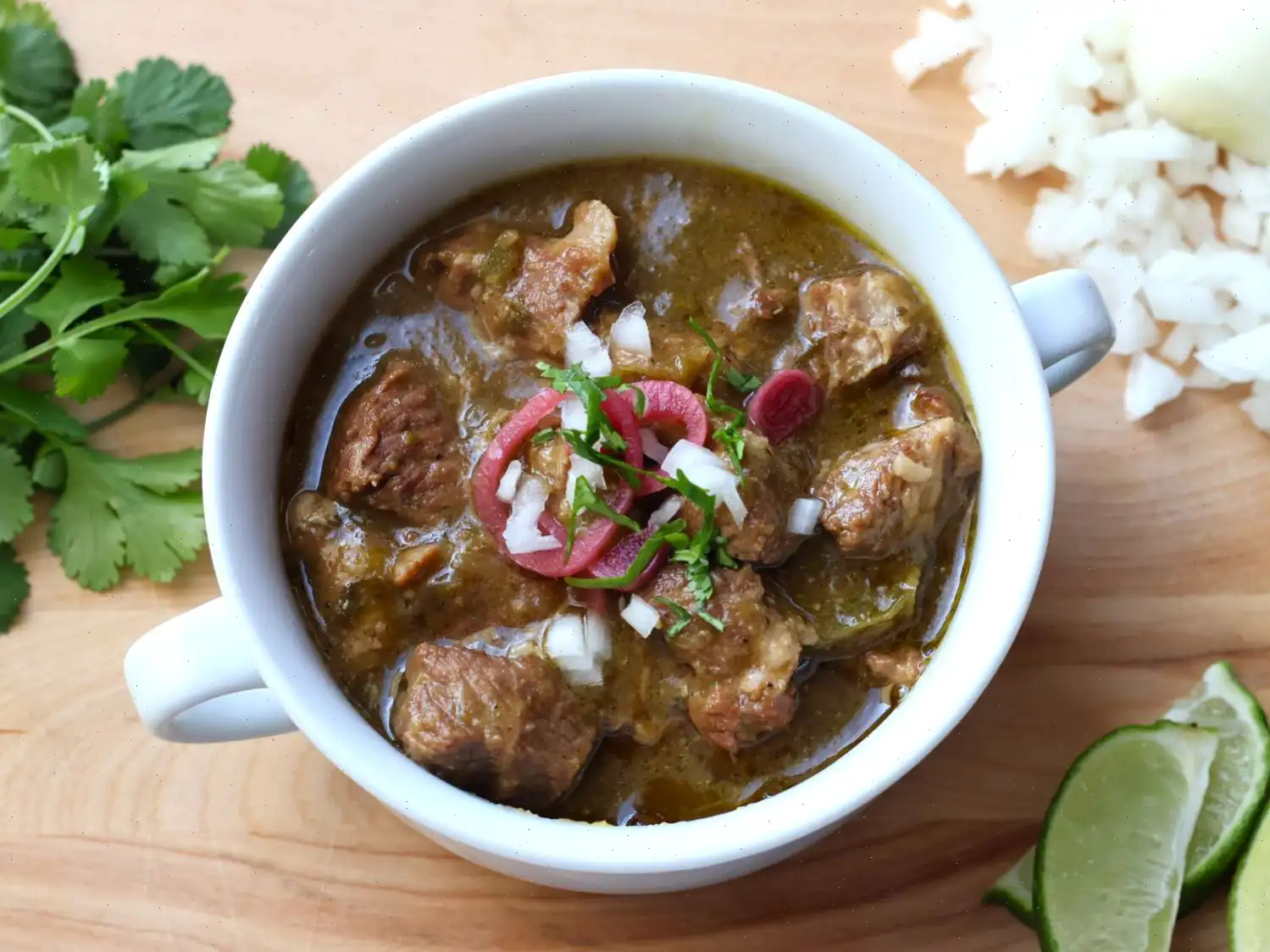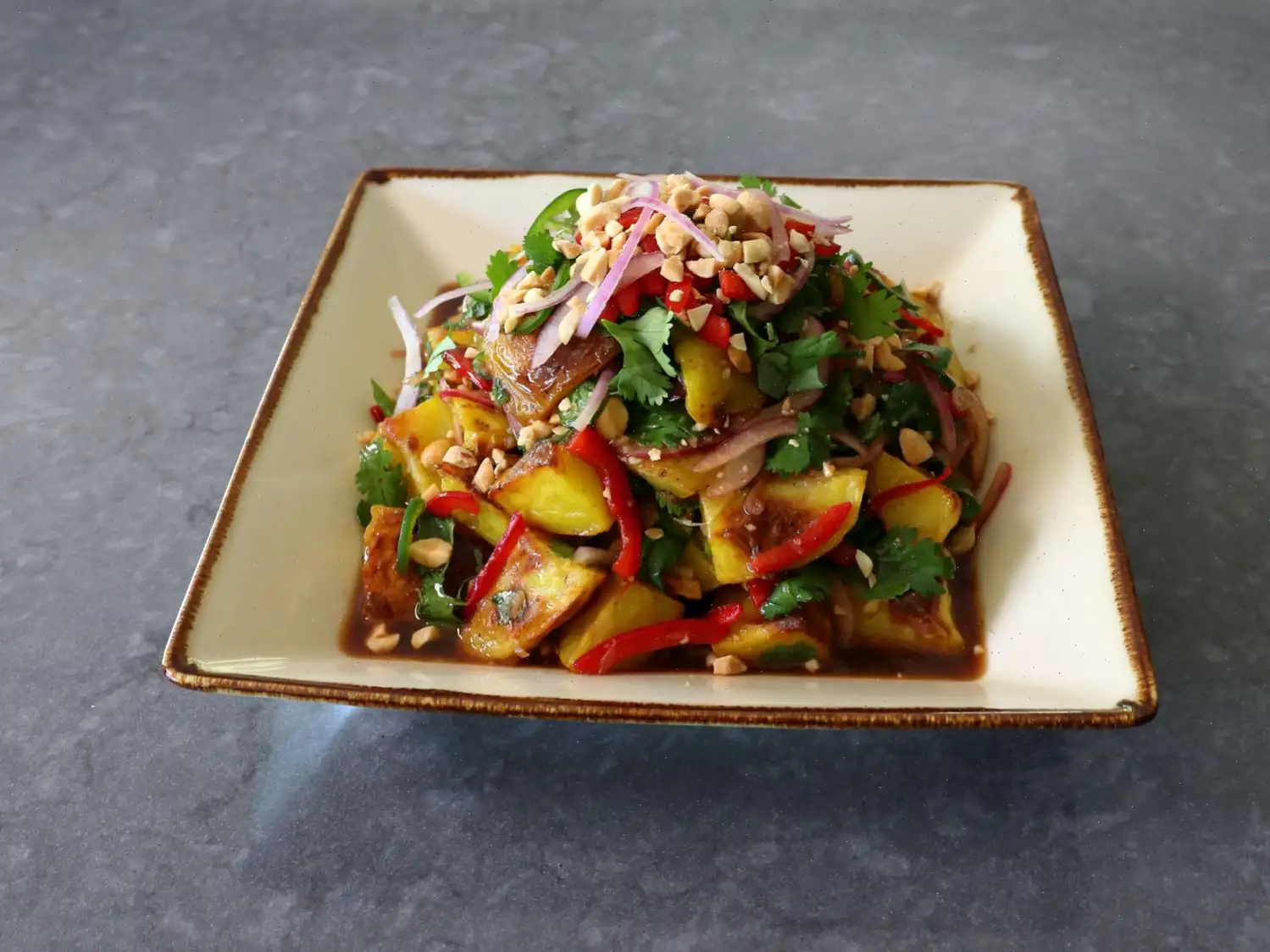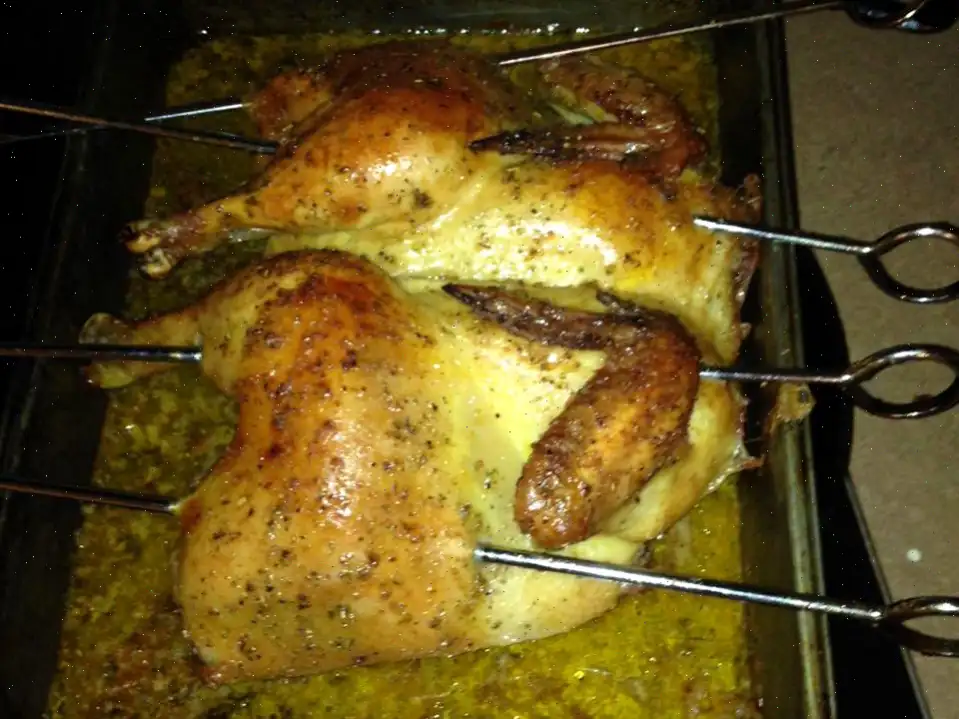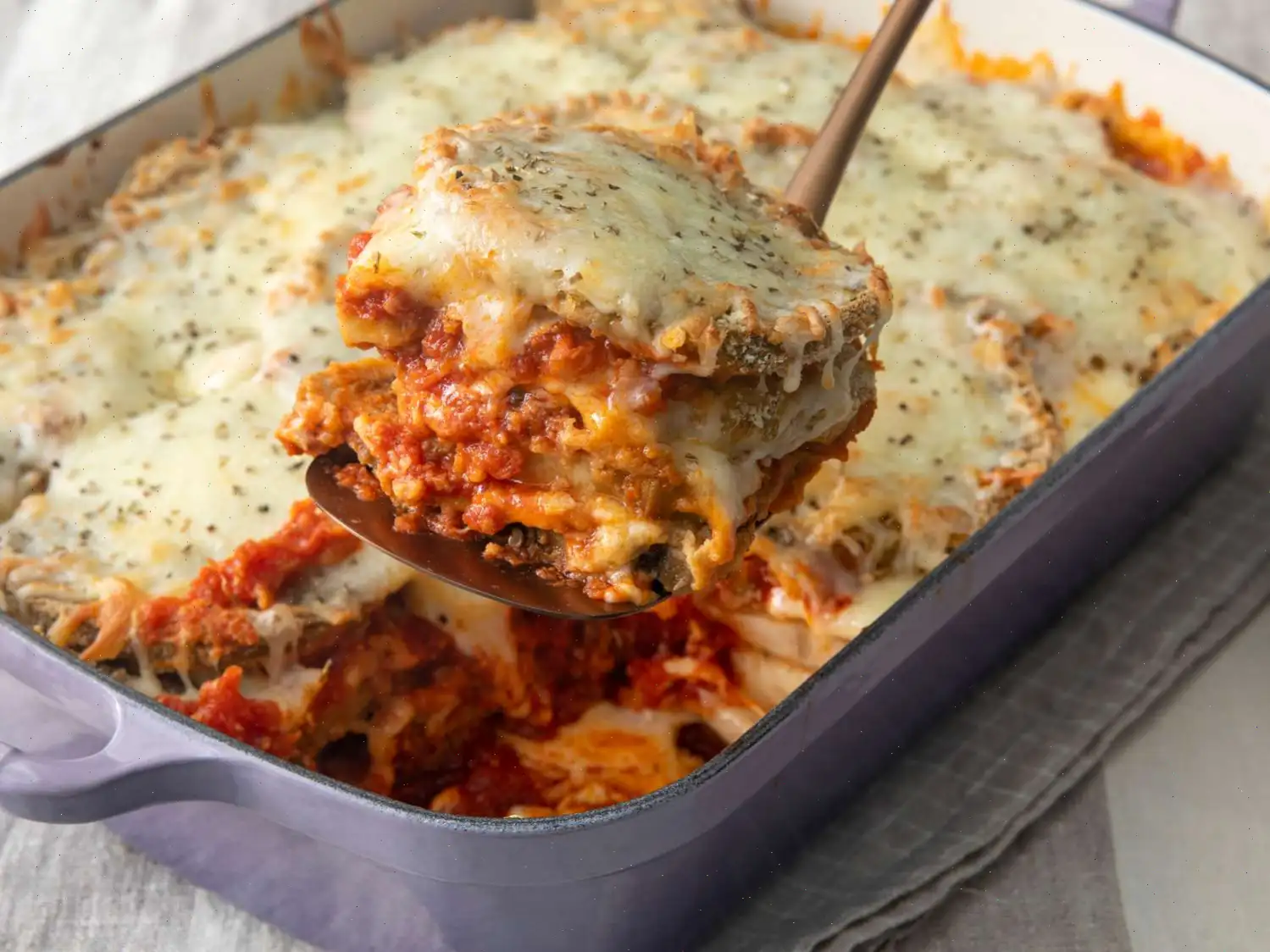
Roasted Asparagus with Hollandaise Sauce Recipe
Ingredients
This recipe was developed at its original yield. Ingredient amounts are automatically adjusted, but cooking times and steps remain unchanged. Note that not all recipes scale perfectly.
- Asparagus: 1 pound asparagus, washed, dried, tough ends removed
- Olive oil: 1 tablespoon
- Salt and freshly ground black pepper: to taste
- Hollandaise Sauce:
- 2 large egg yolks
- 2 teaspoons lemon juice
- 1 teaspoon water
- 1/2 cup hot melted butter
- 1 pinch cayenne pepper (optional)
- 1 large hard-boiled egg, peeled
- 1 tablespoon snipped fresh chives (optional)
Directions
- Preheat the oven to 400F (200C). Line a sheet pan with foil or parchment paper.
- Place asparagus on the prepared pan and drizzle olive oil over the spears. Season with salt and pepper. Toss asparagus spears with clean hands until evenly coated with olive oil and seasonings, then spread them in a single layer on the pan.
- Roast in the center of the preheated oven for 10 to 12 minutes, until fork-tender. Thicker asparagus may need a bit more time.
- While the asparagus is roasting, prepare the Hollandaise sauce. In a heavy saucepan or small skillet, whisk together the egg yolks, lemon juice, and water until well blended. Season with salt and pepper.
- Turn the heat to medium-low and whisk continuously, making sure to stir the entire bottom and sides of the pan, until the eggs begin to thicken slightly, about 2-3 minutes. If the mixture starts to curdle, remove the pan from the heat and continue whisking until smooth.
- Gradually whisk in the hot melted butter, one tablespoon at a time, whisking briskly after each addition. Adjust the seasoning with more salt and pepper, and stir in the cayenne pepper, if desired.
- If the sauce becomes too thick, add a drop or two of water or lemon juice to adjust the consistency.
- Once the asparagus is roasted and the Hollandaise sauce is ready, plate the asparagus and pour the sauce on top. Grate the hard-boiled egg over the sauce, and garnish with fresh chives, if using.
Nutrition Facts (per serving)
| Calories | 310 |
| Total Fat | 30g (39% Daily Value) |
| Saturated Fat | 16g (82% Daily Value) |
| Cholesterol | 200mg (67% Daily Value) |
| Sodium | 308mg (13% Daily Value) |
| Total Carbohydrates | 5g (2% Daily Value) |
| Dietary Fiber | 2g (8% Daily Value) |
| Total Sugars | 2g |
| Protein | 7g (14% Daily Value) |
| Vitamin C | 9mg (10% Daily Value) |
| Calcium | 52mg (4% Daily Value) |
| Iron | 2mg (9% Daily Value) |
| Potassium | 303mg (6% Daily Value) |
* Percent Daily Values are based on a 2,000 calorie diet. Your daily values may be higher or lower depending on your calorie needs.
Origin and History
Asparagus is one of the oldest cultivated vegetables, with roots tracing back to the ancient civilizations of Egypt, Greece, and Rome. The vegetable was highly prized by the Romans, who believed it to have medicinal properties and used it in various remedies. Asparagus made its way into French cuisine in the 17th century, where it gained immense popularity. The pairing of asparagus with Hollandaise sauce, however, became a quintessential French dish during the 19th century, particularly in fine dining establishments. The combination of tender asparagus and creamy, buttery Hollandaise has since become a symbol of luxury and refinement.
Regional Variations
While roasted asparagus with Hollandaise sauce is most closely associated with French cuisine, variations of this dish are enjoyed worldwide. In France, it is often served as a side dish to elaborate meals, particularly during festive seasons such as Easter. In other parts of Europe, such as Germany and the Netherlands, asparagus is also celebrated, and it is often paired with sauces that range from mustard-based to richer cream sauces. In the United States, asparagus is commonly featured as a springtime delicacy, often enjoyed at brunches or holiday meals. Some regions substitute Hollandaise with other egg-based sauces like Barnaise or Mornay, providing subtle yet significant flavor differences.
Distinguishing Features
Roasted asparagus with Hollandaise sauce stands out for its balance of simplicity and sophistication. Unlike other common ways of preparing asparagus, such as boiling or steaming, roasting the vegetable caramelizes the sugars, bringing out its natural sweetness and adding depth of flavor. What truly sets this dish apart, however, is the rich and velvety texture of the Hollandaise sauce, which is made by emulsifying egg yolks with hot butter. The sauce is typically seasoned with lemon juice and cayenne pepper, creating a perfect contrast to the earthiness of the asparagus. The presence of a hard-boiled egg garnish also adds a visual appeal and enhances the dishs flavor profile.
Where Its Typically Served
Roasted asparagus with Hollandaise sauce is often served in upscale restaurants and at celebratory meals. It is a common choice for brunches and holiday gatherings, particularly in spring when asparagus is in season. This dish is popular in fine dining for its luxurious feel, but it can also be enjoyed at home for special occasions like Easter or Mothers Day. In some regions of Europe, it is a staple of the springtime culinary tradition, where asparagus is freshly harvested and paired with rich sauces for a seasonal treat.
Fun Facts
- Asparagus is known for its distinctive flavor, which some people find slightly bitter, while others describe it as earthy and grassy. Interestingly, asparagus has a naturally occurring compound called asparagusic acid, which is responsible for the pungent odor that some people notice in their urine after eating it.
- The word "Hollandaise" actually means "Dutch sauce," yet it is a key component of French cuisine. Its origins are disputed, but it is widely believed to have been popularized by French chefs in the 19th century.
- Asparagus is packed with health benefits. It is rich in vitamins A, C, E, and K, as well as fiber, folate, and antioxidants, making it a highly nutritious vegetable to include in your diet.
- Roasted asparagus is not just a side dish; it can also be used in salads, pastas, or as a topping for pizzas, showing its versatility beyond the traditional pairing with Hollandaise.
You can listen to this recipe in AI audio format. Simply click the play button below to listen to the content in a format that suits you best. It’s a great way to absorb information on the go!


